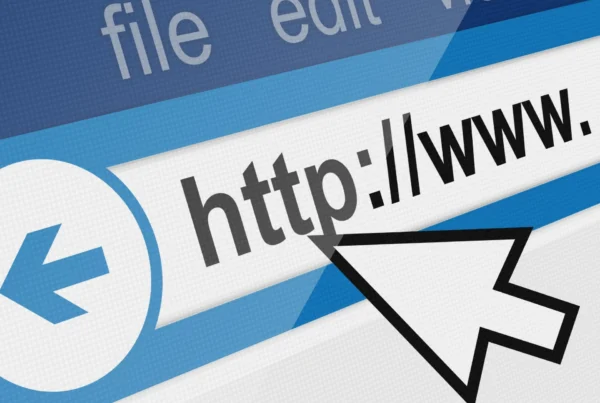In the digital age, businesses are constantly looking for new ways to engage with their customers, increase foot traffic, and boost sales. One of the most powerful tools emerging in the realm of digital marketing is ad geofencing. This innovative strategy leverages location-based technology to target users with personalized advertisements when they enter a specific geographic area. For businesses, understanding how ad geofencing works and recognizing its benefits is essential to staying competitive and relevant in an increasingly crowded market.
What is Ad Geofencing?
At its core, ad geofencing is a form of location-based advertising that uses GPS or RFID technology to set up a virtual boundary around a physical location. This boundary is referred to as a “geofence,” and it can be customized to be as large as a city block or as small as a particular store or venue. When a consumer enters or exits this designated zone, they are targeted with specific ads on their mobile devices, typically via apps, social media platforms, or websites.
In simple terms, geofencing allows businesses to engage with their customers in real-time, right when they are physically near or inside the business location. This provides an invaluable opportunity to influence their buying decisions, offer personalized discounts, or simply remind them of the products or services offered nearby.
How Does Ad Geofencing Work?
The technology behind ad geofencing is based on the concept of location-based services, which rely on GPS, Bluetooth, Wi-Fi, or cellular networks to track a user’s whereabouts. When a user enters the geofenced area, the technology sends a signal to their mobile device, triggering an advertisement. These ads can take many forms, including push notifications, banner ads, or even coupons offering discounts on products or services.
What makes geofencing so powerful is its ability to deliver highly relevant, context-aware content to users based on their location. For example, a person walking by a coffee shop could receive an alert with a discount on their favorite latte or a notification about a limited-time offer. This instant connection with a nearby business makes geofencing a unique form of marketing, allowing companies to interact with consumers at the perfect moment—just when they are most likely to take action.
The Benefits for Businesses
For businesses of all sizes, ad geofencing provides a multitude of advantages that can enhance marketing efforts and lead to measurable results. One of the most significant benefits is the ability to target customers at the right time. Traditional advertising methods often cast a wide net, hoping to reach potential customers who may or may not be interested in the product or service being offered. Geofencing, on the other hand, enables businesses to engage with individuals who are already in the vicinity, increasing the likelihood of conversion.
Another major benefit of ad geofencing is its ability to personalize the customer experience. By targeting ads based on location, businesses can deliver content that is relevant to the specific context of the consumer. For instance, a customer who is near a clothing store can receive an advertisement about a seasonal sale or new arrivals, while someone at a restaurant might receive a promotion for a special menu item. Personalization helps to create a more engaging and effective marketing experience, which can lead to higher customer satisfaction and loyalty.
Geofencing is also an excellent tool for boosting foot traffic to physical locations. By sending targeted offers to users when they are in the vicinity, businesses can encourage potential customers to visit their stores, restaurants, or offices. This can be particularly valuable for small businesses that rely on local customers. Geofencing offers an affordable and efficient way to get people through the door, especially when combined with incentives like time-limited discounts or exclusive deals.
Increased Engagement and Conversions
One of the standout advantages of ad geofencing is its ability to drive engagement and conversions. When users receive an ad while in a designated geofenced area, they are more likely to take action due to the immediacy and relevance of the offer. For example, a customer who receives an ad for a discount on a product they’ve been eyeing while they’re walking near the store is far more likely to make a purchase than if they received the same ad at home. This kind of real-time targeting helps businesses capture customers at the moment they are most ready to buy.
Moreover, geofencing allows businesses to track how well their ads are performing by monitoring how many users visit their locations after receiving a notification. This level of tracking enables businesses to assess the effectiveness of their marketing campaigns and adjust their strategies accordingly. The ability to measure return on investment (ROI) in real-time is invaluable for refining marketing efforts and improving customer outreach.
Cost-Effective Advertising
When compared to traditional advertising methods such as print, radio, or TV ads, geofencing offers a far more cost-effective solution. Traditional advertising often reaches a broad audience, many of whom may not be interested in the product or service being promoted. With geofencing, businesses can hone in on a specific group of consumers who are already in the area and more likely to make a purchase. This helps to reduce waste in advertising spend, ensuring that resources are directed toward individuals who are most likely to engage with the brand.
In addition to being more targeted, geofencing is often more affordable for businesses, particularly small ones with limited marketing budgets. Instead of paying for an expensive ad campaign that may not yield results, companies can set up geofences around their physical locations and target only those individuals who are most likely to visit. This results in a more efficient use of resources, maximizing the impact of every marketing dollar spent.
Real-World Applications of Ad Geofencing
Ad geofencing is used across a wide variety of industries, from retail and real estate to hospitality and events. One of the most common applications is in the retail sector, where businesses use geofencing to encourage in-store visits by sending special offers or alerts when a customer enters the geofenced area. Similarly, restaurants can use geofencing to notify nearby consumers about daily specials or loyalty program benefits, helping to attract customers during slow hours.
In the real estate industry, geofencing is used to target potential buyers when they are near a property listing. Real estate agents can send information about the property, open house events, or even virtual tours directly to the mobile devices of individuals who are in the area. This helps to generate interest and engagement among people who are already considering purchasing a home in that neighborhood.
The hospitality and tourism industries have also embraced geofencing, sending targeted ads or promotions to travelers who are near hotels, resorts, or attractions. For example, a hotel may offer a discount or an exclusive offer to tourists arriving in the area, providing an incentive to book a stay. Geofencing can also be used to enhance the visitor experience by providing location-based recommendations, such as nearby restaurants or entertainment options.
The Future of Geofencing
As technology continues to evolve, the future of geofencing looks even more promising. With the integration of artificial intelligence (AI) and machine learning, businesses will be able to deliver even more personalized and relevant ads to customers. AI can analyze data to predict consumer behavior and preferences, allowing for more sophisticated targeting. For example, if a customer frequently visits a specific type of store or restaurant, businesses could send tailored offers or promotions based on past behavior.
Furthermore, as 5G networks continue to expand, geofencing will become even more efficient and precise. Faster network speeds and more accurate location data will enable businesses to send ads in real-time with even greater accuracy, allowing for more timely and impactful engagement.
However, as geofencing becomes more advanced, privacy concerns will need to be addressed. Consumers are becoming more aware of how their data is used, and businesses will need to ensure that they are transparent about their geofencing practices. Clear communication about how data is collected and used will be essential to maintaining consumer trust.
Conclusion
Ad geofencing is transforming the way businesses approach digital marketing. By leveraging location-based technology, companies can deliver highly relevant and timely ads to potential customers in real time. This innovative approach not only increases customer engagement and conversions but also offers a cost-effective and efficient way to market products and services. As geofencing technology continues to evolve, businesses that embrace this strategy will be well-positioned to stay ahead of the competition and build stronger, more personalized connections with their customers.



